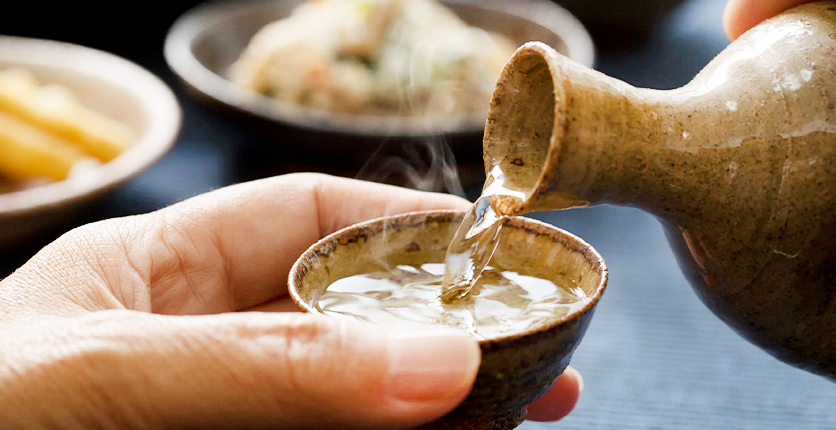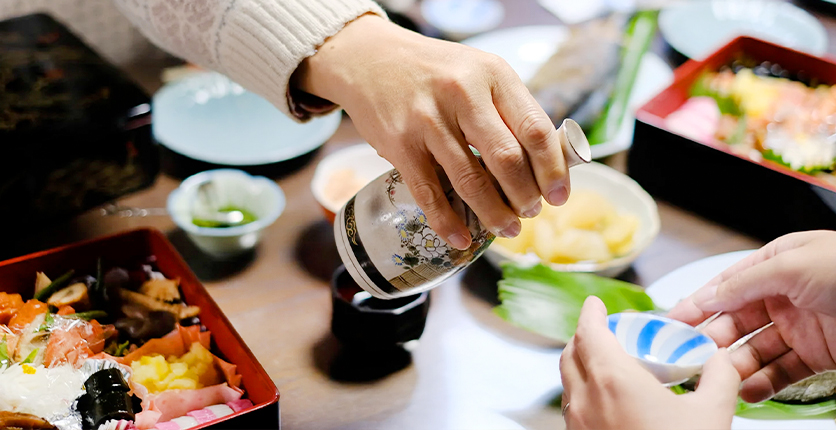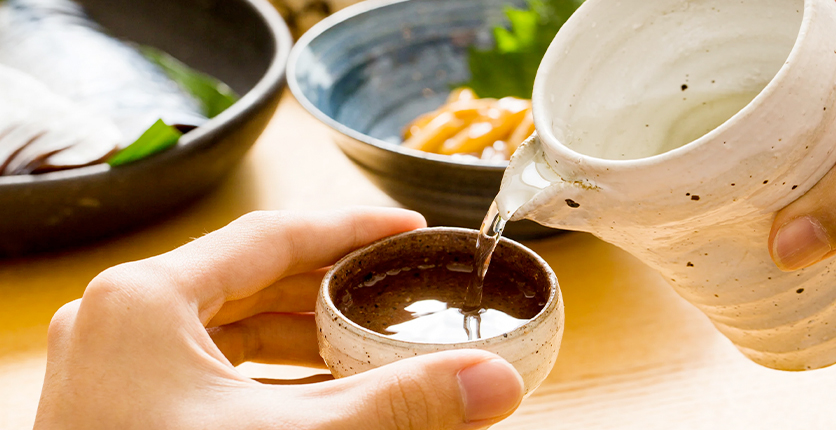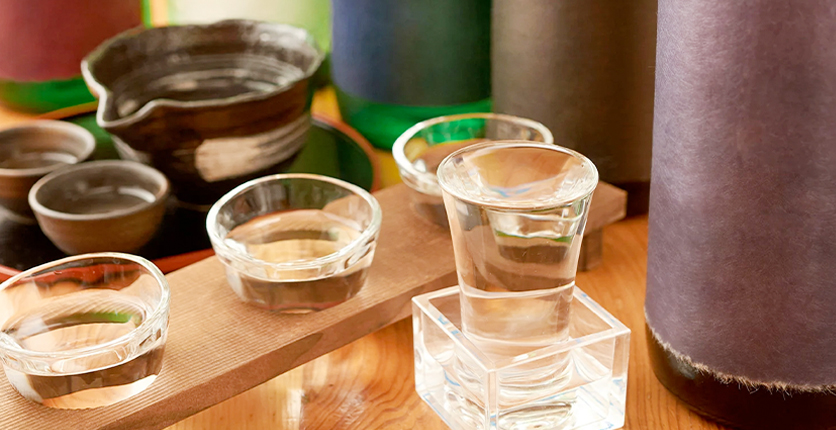Sake is a popular alcoholic beverage made from fermented rice. Also known as Japan’s national drink, sake has a unique flavour and an appearance that ranges from clear to slightly yellowish. Most sakes have an alcohol content of about 15 per cent and are mild in flavour, with aromas that span from fruity, nutty and floral to citrusy and earthy. As sake complements most cuisines, it can be enjoyed and appreciated by just about everyone.
We asked sake sommelier, Joshua Kalinan, Master Sake Sommelier and Sake Sommelier of the Year 2018, to tell us more about this versatile drink and share his tips for serving it.

Q: What is sake made from and how is it produced?
Joshua: A traditional Japanese alcoholic beverage, sake is made from rice, water, yeast, and a mould known as koji (cooked rice and/or soya beans that have been inoculated with a mould culture).
Producing sake consists of a number of steps. First, the rice is polished to remove the outer bran layer. Then, the rice is washed, soaked, and later steamed. Making the koji is next. This is followed by the fermentation process, pressing, filtration and pasteurisation. Finally, the sake is aged and bottled.
There are different styles and types of sake, each with its own unique characteristics and production methods. The quality and flavour profile of a sake depends on a range of factors, from the type of rice used and the water source, to the yeast strain and the brewing techniques employed by the brewery.
Q: Is sake made only in specific regions in Japan?
Joshua: Sake is primarily produced in Japan. While it’s not limited to specific areas, there are certain regions in Japan that are renowned for their sake production because of their favourable climate, rice quality, water quality and traditional brewing techniques.

Q: Are there different varieties of sake?
Joshua: Yes. Sake production is dependent on several factors, including the quality of the rice used, the water source, the yeast strains and the brewing methods. These variables contribute to the diversity and character of the sake that is produced.
Here are some of the main types and varieties of sake:
- Junmai
- Junmai Daiginjo
- Ginjo
- Honjozo
- Nigori
- Futsushu
Within each category, there may be further variations based on the brewing techniques and the individual breweries’ styles. Sake appreciation is a rich and diverse field, and exploring the different types can be a fascinating journey.
Q: How would you describe the flavour of sake?
Joshua: The flavour really depends on the type of sake in question, how it was brewed, and the taster’s individual preferences. That said, there are a few general characteristics that we often associate with sake, such as umami, fruity, floral, complex, clean and smooth, acidic, fragrant, and so on.

Q: What’s the best way to enjoy sake?
Joshua: You can serve sake at various temperatures; the ideal temperature enhances the sake’s flavours and aromas. Many sakes are best enjoyed chilled – this highlights their crispness and fragrance. Some sakes, particularly Junmai sakes and those with richer and fuller flavours, are often served at room temperature. Futsushu sakes are often served warm – this helps to tone down any harsh flavours and creates a smoother drinking experience.
Sake is typically enjoyed neat, without any additional ingredients, so that the taster can appreciate the drink’s natural flavours and complexities. Some sakes, like genshu, are served on the rocks to help chill and dilute them.
Q: What cuisines or flavours go best with sake?
Joshua: Sake is a versatile beverage, with unique characteristics and a balanced profile that make it perfect for pairing with different cuisines. It’s a natural complement to traditional Japanese dishes but it also goes well with Chinese, Korean and Thai food.
Savour your sake at Shima, Singapore’s very first teppanyaki restaurant, that serves authentic and traditional Japanese cuisine with a modern twist. SAFRA members and 11B holders enjoy 10% off; more info at safra.sg/promotions/shima-restaurant-2023

Q: Can you share some tips for choosing a good sake?
Joshua: There are several factors to consider when choosing sake, such as the grade of rice used, the rice polishing ratio, prefecture where it was manufactured, taste profile, price, and so on. The best way to find a good sake is simply by trying as many types, brands and styles as possible. Over time, you’ll discover which flavours and characteristics appeal the most to your palate. Sake appreciation is a journey, and each new bottle brings its own unique pleasures.
Q: Which local Singapore dishes pair well with sake?
Joshua: Singapore dishes offer a host of interesting flavours, so many of them pair favourably with sake – think Hainanese chicken rice, laksa, chili crab and satay, for instance. Kunshu is a fruity and aromatic sake and I’d recommend it to complement your local meal. Kunshu sake has a moderate sweetness and roundness, and is balanced with a refreshing acidity.
Enjoy local cuisine and wind down with drinks in the evening at these SAFRA clubs.

NSmen, sign up for your complimentary 1-year SAFRA membership and enjoy discounts on dining and shopping purchases at over 1,500 merchant outlets islandwide, as well as members’ rates at more than 45 sports facilities at SAFRA clubs! What’s more, your family can enjoy the privileges too – your 1st dependent pays $10/year, and it’s free for your 2nd dependent onwards. Click here for more details.
Want more articles like this, and other lifestyle content right in your inbox? Download the new SAFRA mobile app and opt in for the eNSman Newsletter – you don’t need to be a SAFRA member to subscribe – and never miss another story!










